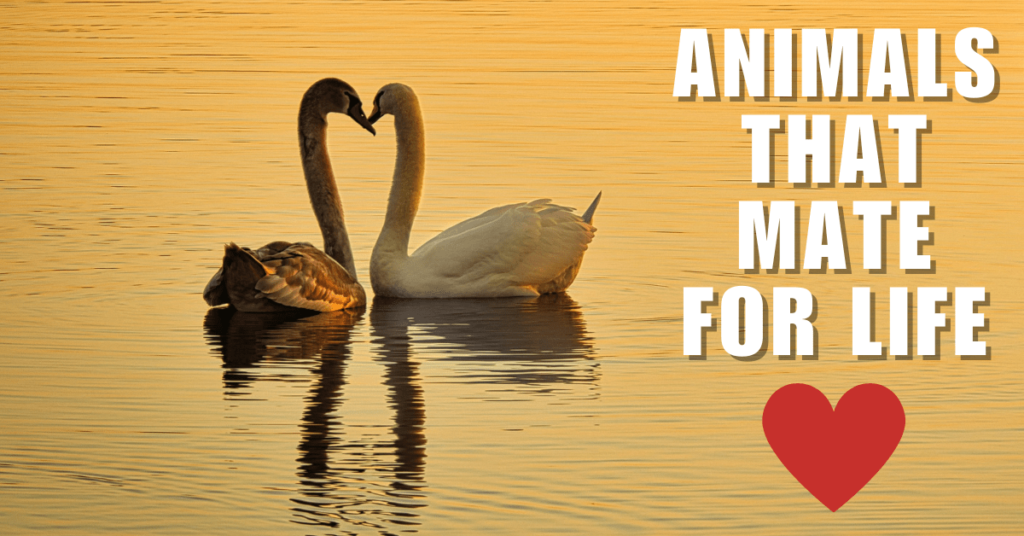Orca hunting is one of the most fascinating behaviors in the marine world, showcasing the intelligence and cooperation of these apex predators. Orcas, also known as killer whales, reign supreme in the marine world as apex predators. Their remarkable hunting prowess and sophisticated techniques have earned them a reputation as one of the ocean’s most formidable hunters.
Unlike many other marine creatures, orcas exhibit a level of intelligence and adaptability that sets them apart. From their complex social structures and diverse hunting methods to their ability to prey on some of the ocean’s most fearsome species, orcas showcase a unique blend of power, strategy, and versatility.
This article delves into ten fascinating facts about orca hunting, revealing how these magnificent creatures dominate their aquatic domain. By exploring their intricate hunting behaviors, social cooperation, and advanced techniques, we gain a deeper understanding of why orcas are considered the ultimate predators of the sea.
We have already discussed about Orcas in our List of Smartest Animals in the World.
10 Facts About Orca Hunting
Animal Information Table:
| Common Name | Orca (Killer Whale) |
| Scientific Name | Orcinus orca |
| Family Name | Delphinidae |
| Type | Marine Mammal |
| Size | Head and Body Length: 5.8 – 9.8 meters (19 – 32 feet) Tail Length: Varies |
| Weight | 2,500 – 6,000 kg (5,500 – 13,000 lbs) |
| Size Relative to a 6-Ft Human | 3 to 5 times larger |
| Diet | Fish, squid, marine mammals (including seals, dolphins, and even other whales) |
| Average Lifespan in the Wild | 30 – 50 years, with some individuals living up to 60 years or more |
| Habitat | Oceans worldwide, from the Arctic to the Antarctic, with different populations in various regions |
| Group Name | Pod |
| Found In | All oceans, with distinct populations in different regions including the North Pacific, South Pacific, Atlantic, and Antarctic Oceans |
| Conservation Status | Data Deficient (varies by population; some populations are endangered or at risk) |
1. Orcas Have the Strongest Bite Force Among Marine Mammals
The orca bite force is one of the strongest in the marine world, with a bite pressure that can exceed 19,000 pounds per square inch. To put this into perspective, compare this with the great white shark, which also has a powerful bite but reaches only around 1,200 pounds per square inch. Orcas use their immense bite force not just for capturing prey but also for crushing bones and consuming large sea creatures. This ability allows them to tackle a wider range of prey than many other predators, demonstrating their unparalleled predatory efficiency.
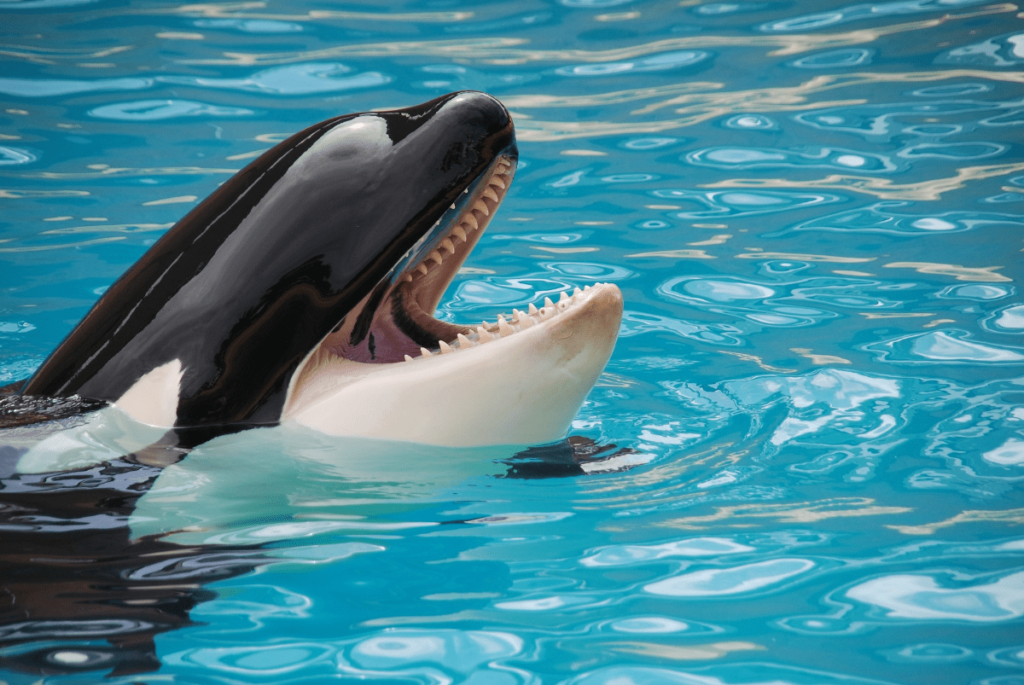
2. Orcas Hunt in Complex Social Groups
Orca hunting strategies are highly sophisticated, involving teamwork and coordination to capture prey effectively. Orcas hunt in sophisticated social groups called pods, which can consist of several families working together. This cooperative hunting contrasts sharply with the solitary nature of the great white shark. While great white sharks rely on solitary hunting, orcas benefit from the collective effort of their pods. This teamwork enhances their success rate, as seen when pods coordinate to herd and capture prey, such as seals or even other whales. This social hunting strategy gives orcas a distinct advantage over many solitary marine predators.
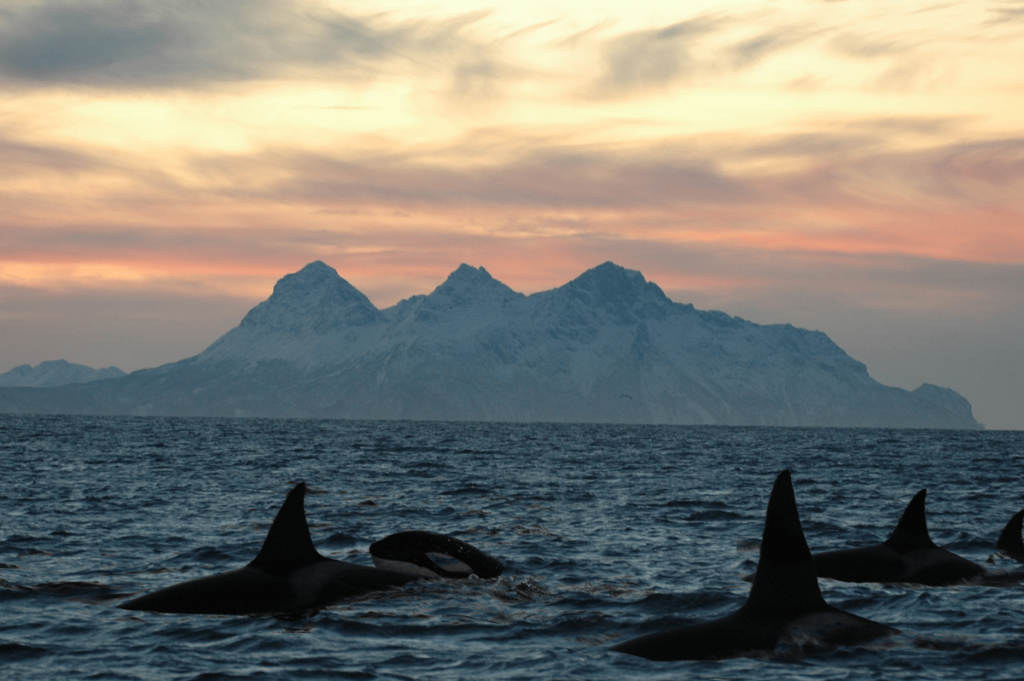
3. Orcas Use Sophisticated Hunting Techniques
Orcas employ a variety of advanced hunting techniques. One of their remarkable methods is beaching, where they temporarily leave the water to catch prey on ice floes or beaches. This technique is unique among marine predators and stands in contrast to the hunting methods of predators like the tiger shark, which primarily relies on ambush tactics in deeper waters. Orcas also practice wave washing to dislodge seals from ice floes, a strategy not observed in other marine predators. This innovative approach demonstrates their adaptability and ingenuity in capturing prey.
4. Orcas Have a Diverse Diet Based on Their Ecotype
Orcas’ diet varies significantly based on their ecotype. Orca hunting behavior varies depending on the prey, with some pods of transient orcas specializing in hunting marine mammals, while Resident orcas mainly focus on fish. This dietary flexibility is different from the more specialized diets of animals like the polar bear, which relies heavily on seals and is less adaptable to changes in prey availability. The ability of orcas to switch between different prey types and even exploit unique food sources, such as the liver of great white sharks, highlights their versatility and adaptability in the marine environment.

5. Orcas Can Create Unique Hunting Sounds
Orcas use echolocation to hunt, emitting high-frequency clicks and analyzing the echoes to locate prey. This sophisticated sonar system is more advanced than the echolocation used by dolphins, which is also effective but less complex. Orcas can produce specific hunting calls to coordinate their efforts, a level of vocal communication not seen in many other marine animals. This ability to create and interpret a range of sounds gives orcas a significant advantage in locating and capturing prey in the often murky ocean waters.
6. Orcas Are Known to Prey on Great White Sharks
One of the most striking facts about orcas is their ability to prey on great white sharks. Orcas have been observed specifically targeting and consuming the liver of great white sharks, a feat that no other marine predator achieves with such precision. The great white shark, while a formidable predator itself, is vulnerable to the strategic hunting techniques of orcas. This unique predatory behavior underscores orcas’ status as apex predators, capable of exerting significant influence over other top marine species.
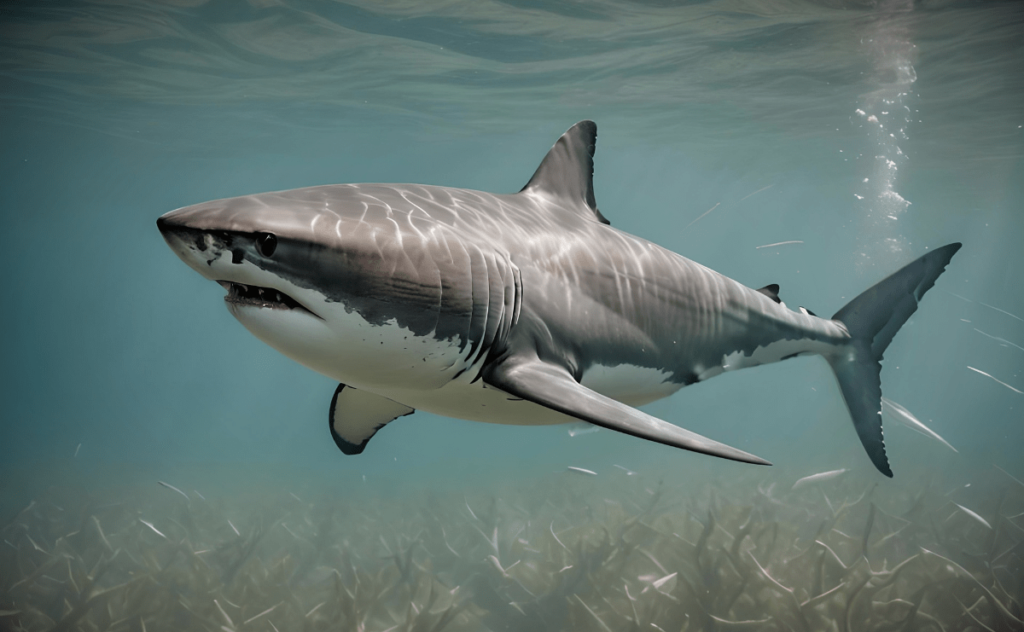
7. Orcas Exhibit Learned Hunting Behaviors
Orcas learn their hunting techniques from other pod members, a process that highlights their advanced cognitive abilities. This social learning contrasts with the more instinctual hunting methods of animals like the hammerhead shark, which relies primarily on innate behaviors. Orcas pass down knowledge and techniques through generations, demonstrating a level of cultural transmission and adaptability that is rare among marine predators. This learning process enhances their hunting efficiency and allows them to adapt to changing environments.
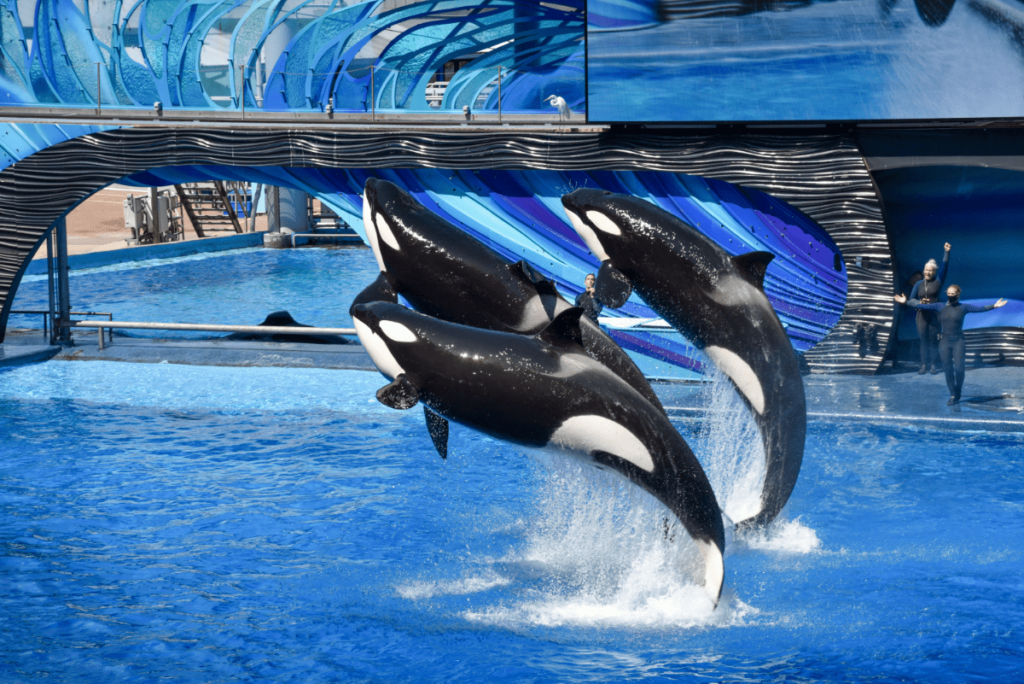
8. Orcas Utilize Environmental Tools in Hunting
Orcas are known to use their environment creatively to aid in hunting. For example, they can manipulate waves and ice floes to flush out prey, a strategy not employed by many other marine predators. Compare this with the harpoon-like feeding behavior of the sailfish, which uses its bill to slash through schools of fish. While sailfish rely on physical tools, orcas’ use of environmental elements showcases their ability to adapt their hunting strategies to their surroundings in innovative ways.
9. Orcas Have Adapted Their Hunting Strategies Over Time
Orcas are highly adaptable hunters, evolving their strategies in response to changes in their environment and prey availability. This adaptability contrasts with the more fixed hunting patterns of the sea lion, which primarily preys on fish and squid. Orcas’ ability to modify their tactics, such as shifting from fish to marine mammals or adjusting their hunting techniques based on prey behavior, illustrates their resilience and intelligence. This evolution in hunting strategies helps orcas thrive in diverse and changing marine ecosystems.
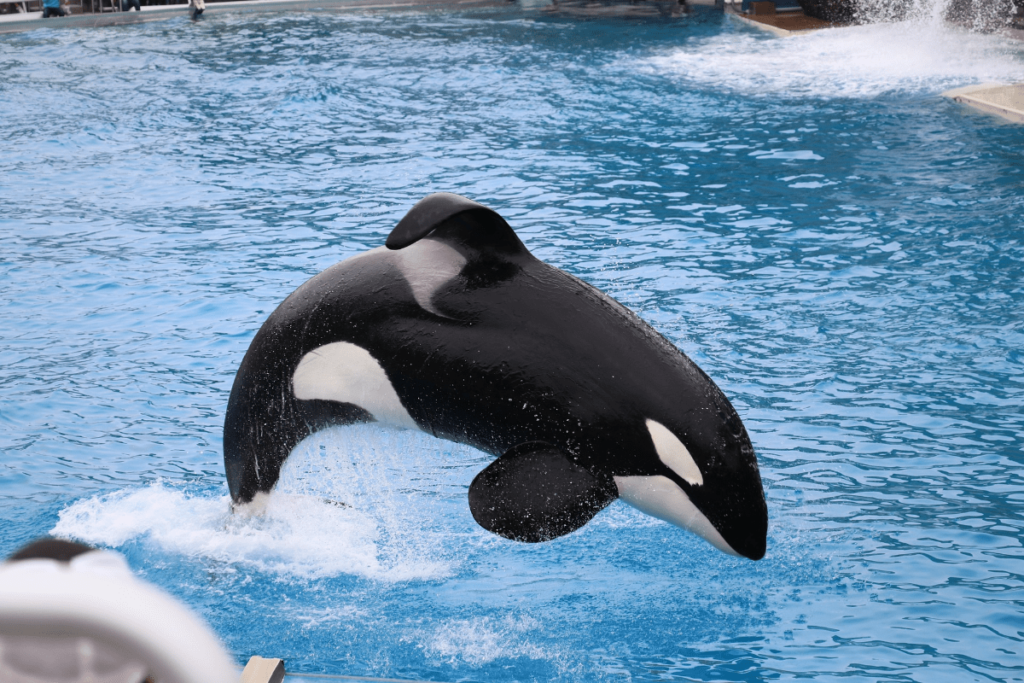
10. Orcas Demonstrate High Intelligence in Hunting
Orcas exhibit remarkable intelligence in their hunting behaviors, including problem-solving, communication, and strategic planning. This level of cognitive ability is superior to that of many other marine predators, such as the octopus, which is also known for its intelligence but does not display the same level of social cooperation or strategic hunting. Orcas’ ability to plan hunts, communicate effectively with pod members, and adapt their strategies highlights their advanced mental capabilities and solidifies their position as apex predators.
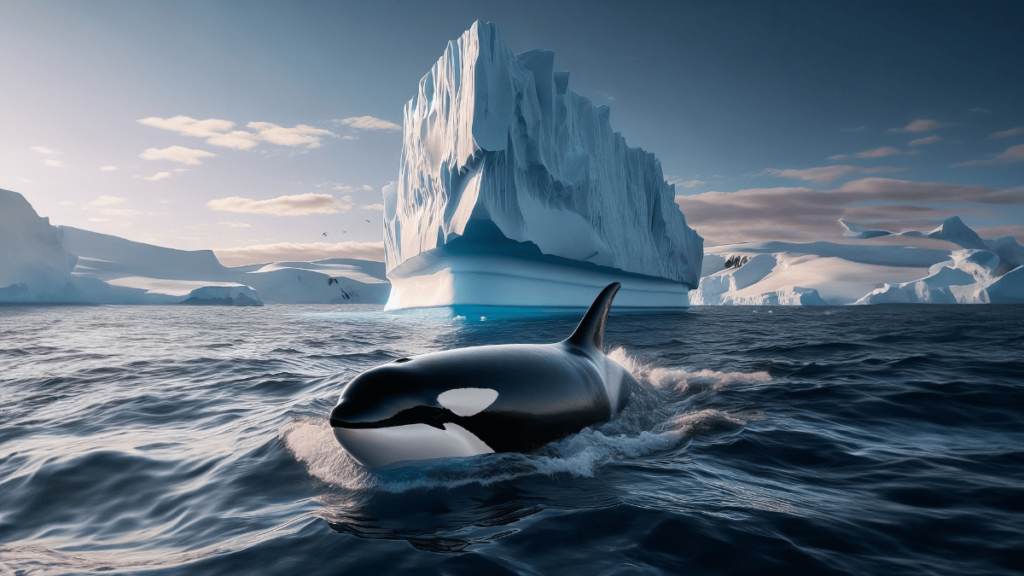
Explore our article on the clever and elusive octopus, where we delve into the question: How Smart Are Octopuses?
FAQs about Orcas
1. What hunts orcas?
Orcas, or killer whales, are apex predators in the marine environment, meaning they sit at the top of the food chain with no natural predators. Their only real threats come from human activities, such as hunting, pollution, and habitat destruction. In the wild, orcas are rarely preyed upon by other animals due to their size, strength, and hunting skills. However, there are occasional reports of other orca pods attacking and killing members of rival pods, particularly in territorial disputes. Moreover, young orcas may occasionally fall victim to larger marine predators or aggressive encounters with other orca pods, particularly during territorial disputes.
2. Do orcas hunt dolphins?
Yes, orcas do hunt dolphins. Orcas are known for their varied diet and hunting techniques, and dolphins are one of the prey items for certain ecotypes of orcas. Transient orcas, in particular, target marine mammals, including dolphins, as part of their diet. These orcas use sophisticated hunting strategies, such as coordinated attacks and herding, to capture and consume dolphins. This behavior highlights their versatility and adaptability as apex predators in the ocean.
3. Does anything hunt orcas?
Orcas are generally at the top of the food chain and have very few natural predators. While they do not have natural predators, these human-induced factors can significantly impact their populations and overall well-being.
4. Do orcas hunt great white sharks?
Yes, orcas are known to hunt and prey on great white sharks. Orcas have been observed specifically targeting the liver of great white sharks, which is a rich source of nutrients. This behavior is unique and has been documented in several instances, showcasing the orcas’ ability to take down even the most formidable marine predators. The orca’s hunting of great white sharks highlights their dominance and skill as apex predators in the marine ecosystem.
5. Do orcas hunt humans?
Orcas do not hunt humans. There have been very few documented cases of orcas attacking humans, and these incidents are often attributed to captivity-related stress or misunderstandings rather than natural behavior. In the wild, orcas typically do not pose a threat to humans and are more focused on hunting their natural prey, such as fish, marine mammals, and squid. Most interactions between orcas and humans are peaceful, and orcas are generally not known to exhibit aggressive behavior towards people.
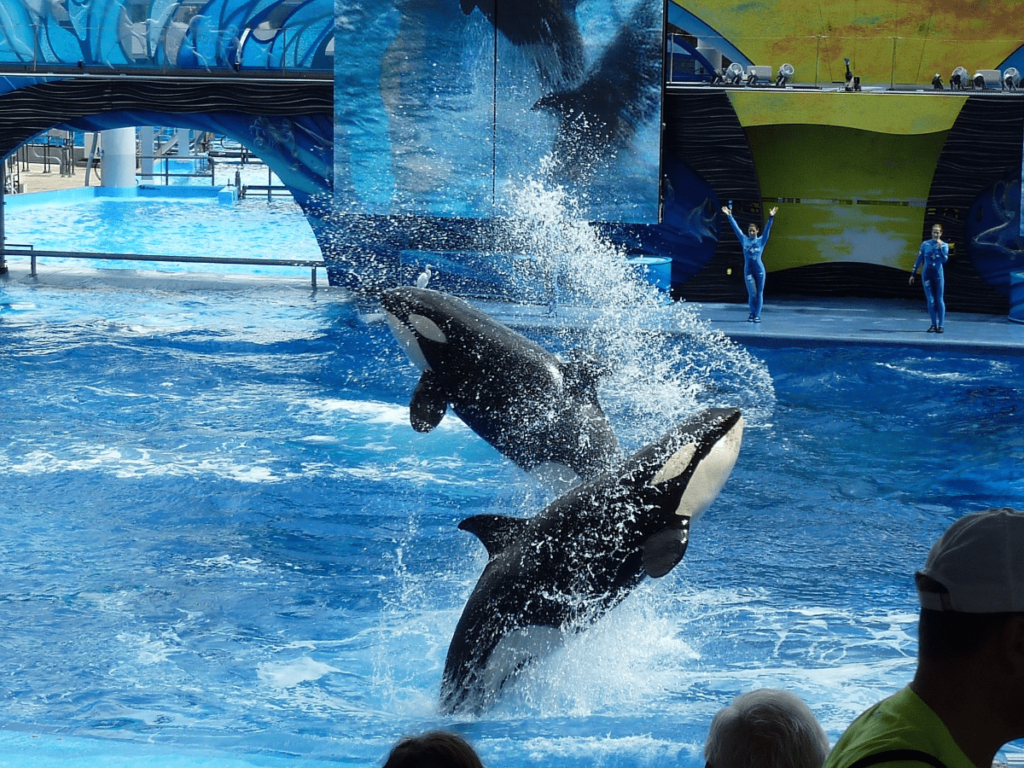
6. Can orcas adapt their hunting strategies?
Yes, orcas are highly adaptable hunters. Orcas hunting methods include sophisticated techniques like group coordination and strategic ambushes, tailored to the type of prey. They modify their hunting strategies based on prey availability, environmental conditions, and their own pod dynamics. The impressive orca bite force is a testament to their status as apex predators and their dominance in the oceanic food chain. For example, orcas may use different techniques to hunt fish versus marine mammals, and they can even learn new strategies from observing other pods. This adaptability is a key factor in their success as apex predators and allows them to thrive in diverse and changing marine environments.
7. How do orcas communicate while hunting?
Orcas use a complex system of vocalizations and echolocation to communicate and coordinate during hunts. They emit a range of clicks, whistles, and calls that help them locate prey and coordinate their efforts with other pod members. This sophisticated communication system is crucial for successful group hunting and reflects the high level of social organization and intelligence within orca pods.
Conclusion
As the ocean’s top predators, orca hunting behaviors continue to fascinate scientists and enthusiasts alike, revealing new layers of their complex social dynamics. Orcas, with their impressive hunting skills and remarkable intelligence, truly exemplify what it means to be an apex predator. From their powerful bite force to their sophisticated hunting techniques and adaptability, these marine mammals stand out in the ocean’s food chain. With a bite force that can exceed 19,000 Newtons, orcas are capable of crushing the bones and shells of their prey.
Orca behavior in captivity can differ from wild behavior, leading to important discussions about their welfare and the impact of human interactions. How do orcas hunt? They employ a range of strategies, from collaborative group efforts to individual ambushes, depending on the prey. Understanding these 10 fascinating facts about orca hunting not only deepens our appreciation for their role in marine ecosystems but also underscores the need for continued conservation efforts to protect these extraordinary animals.
Support marine conservation initiatives to ensure orcas continue to thrive and maintain their position as top predators in the ocean.


